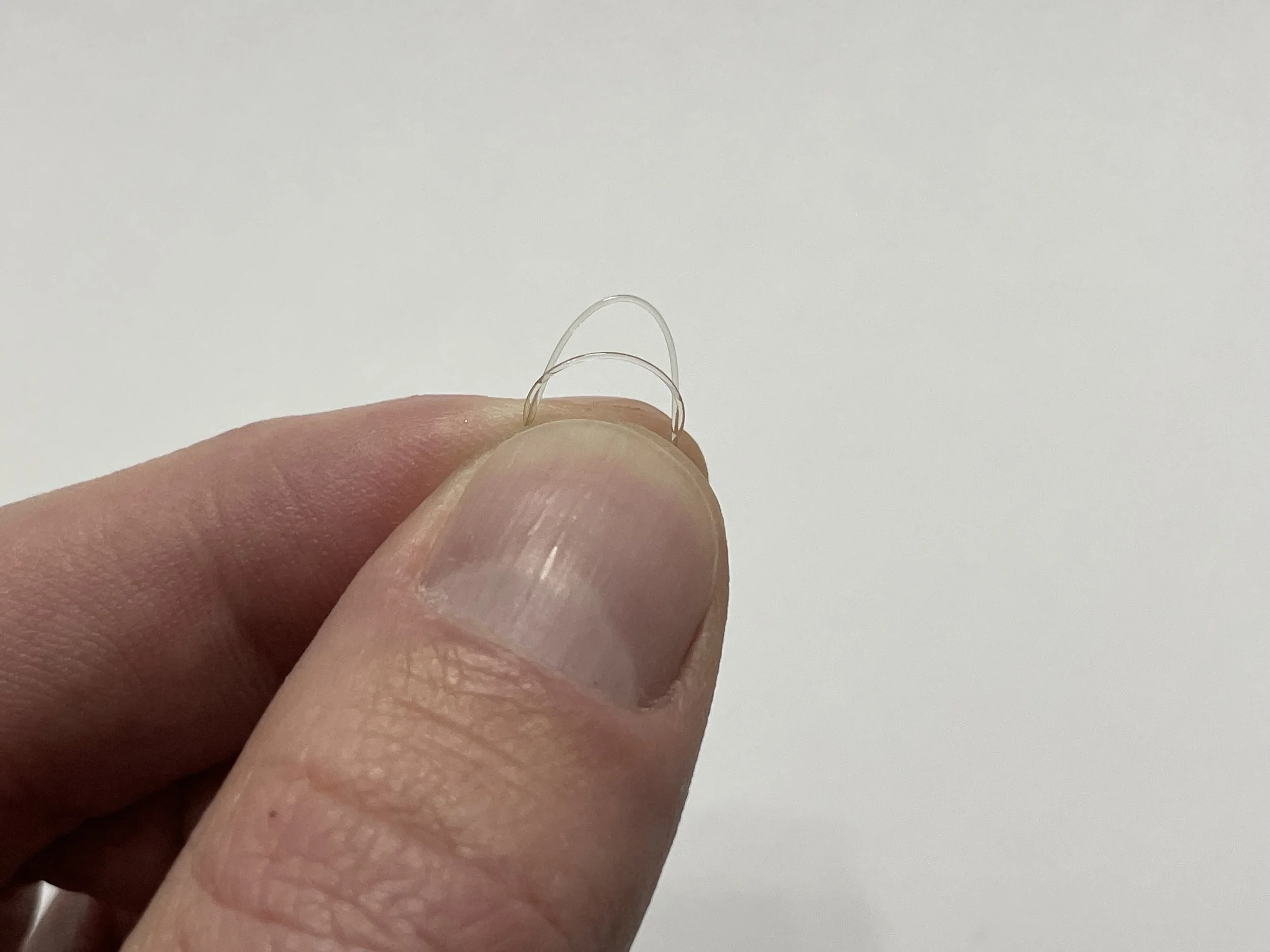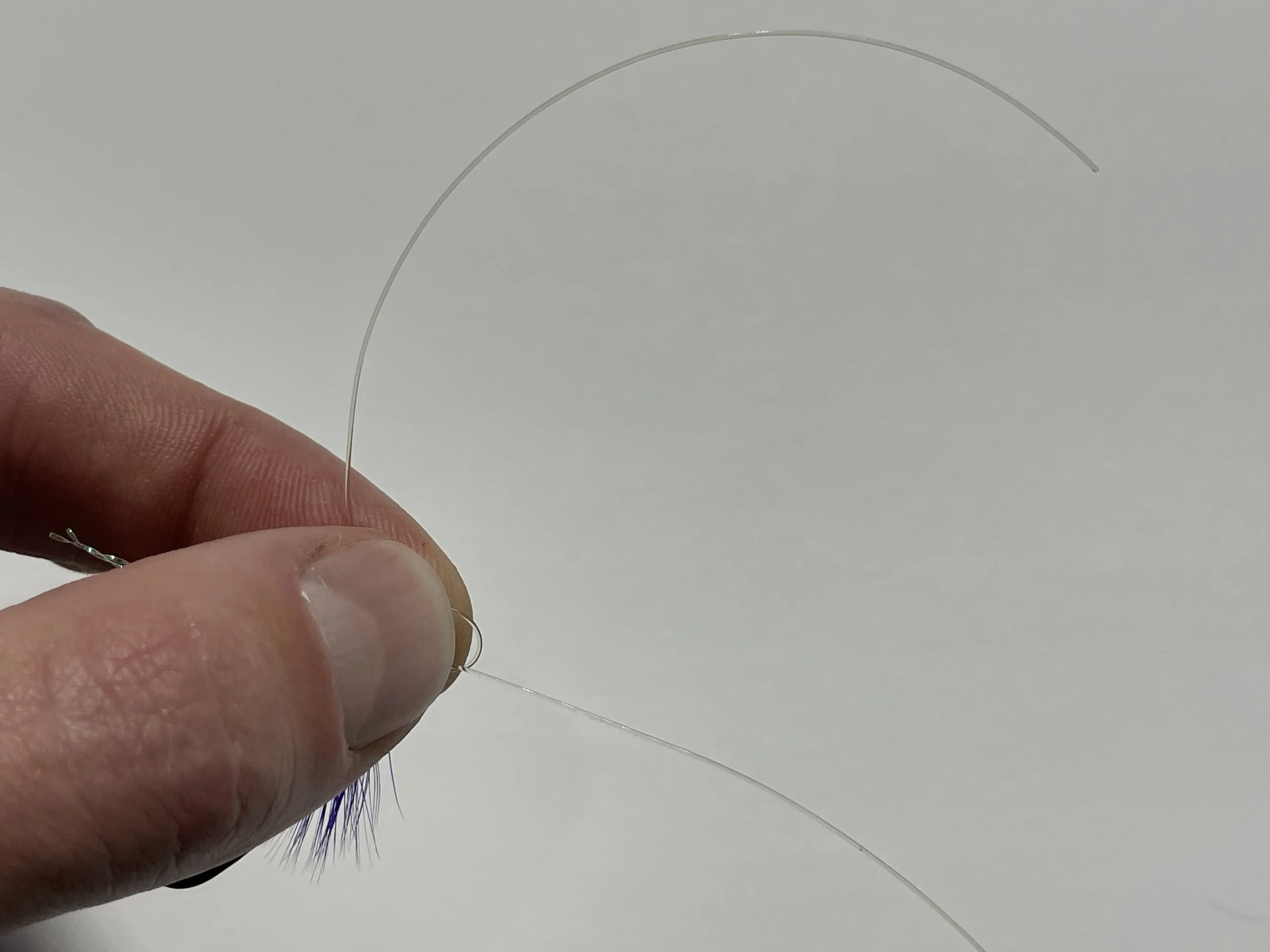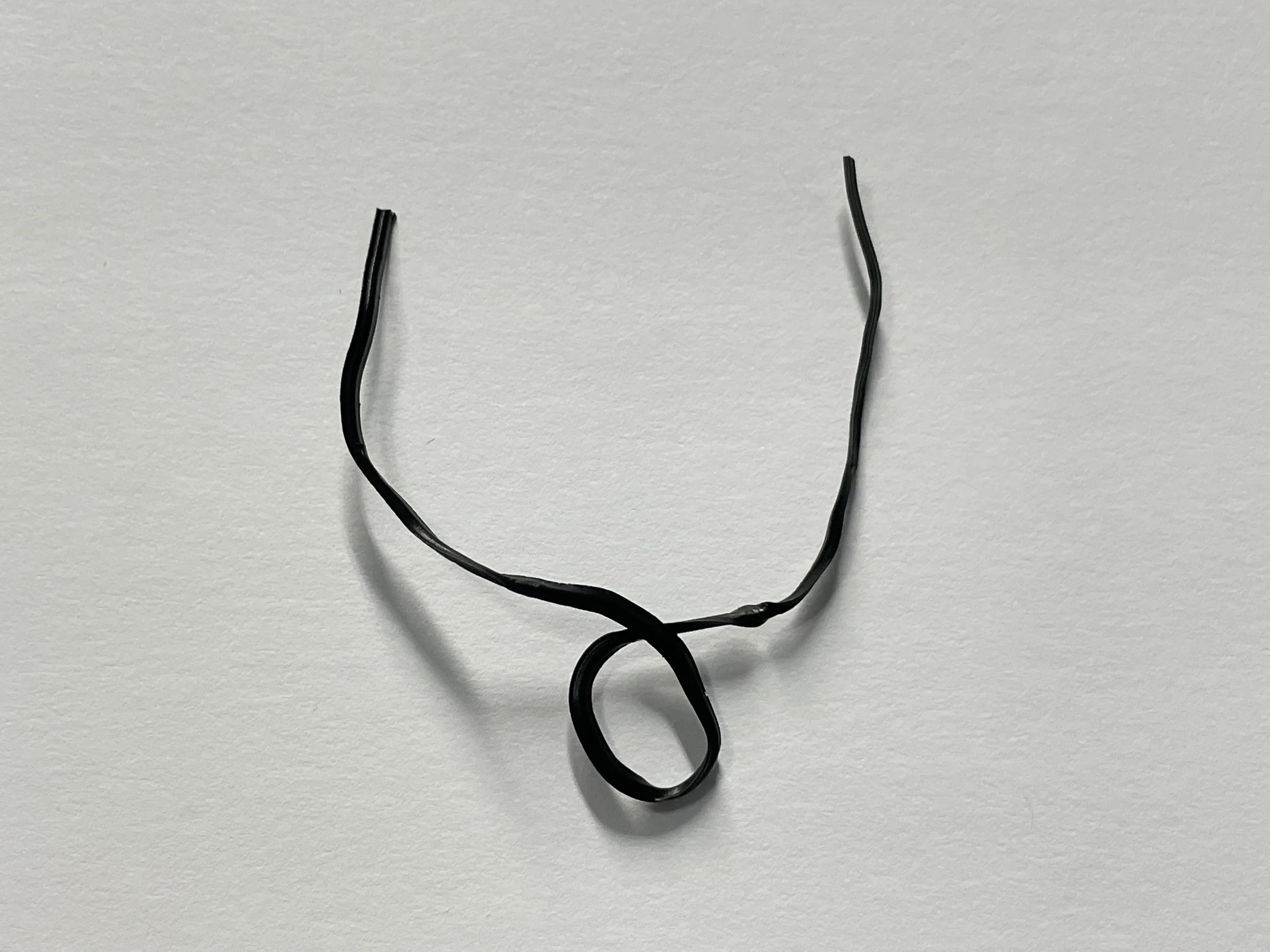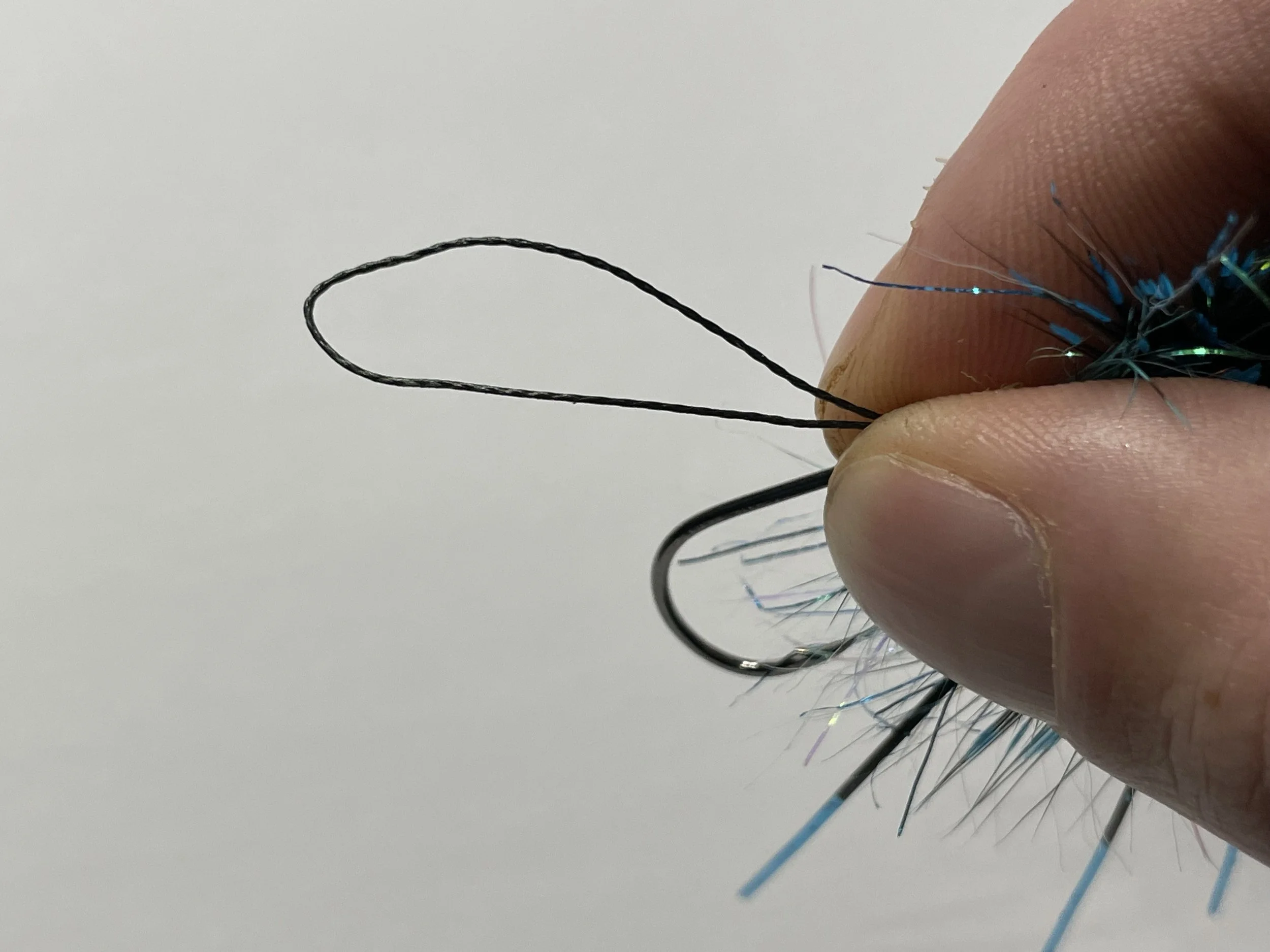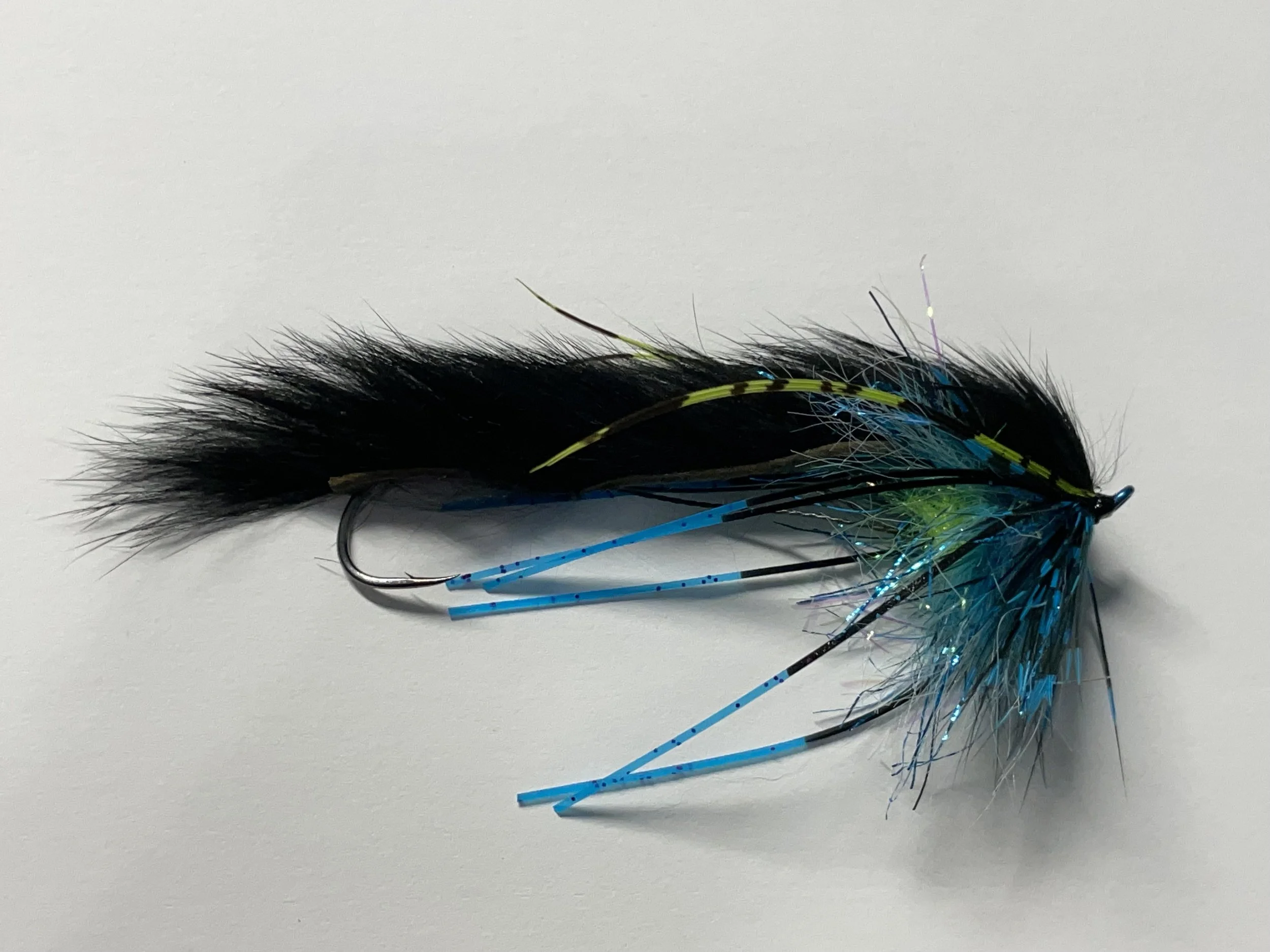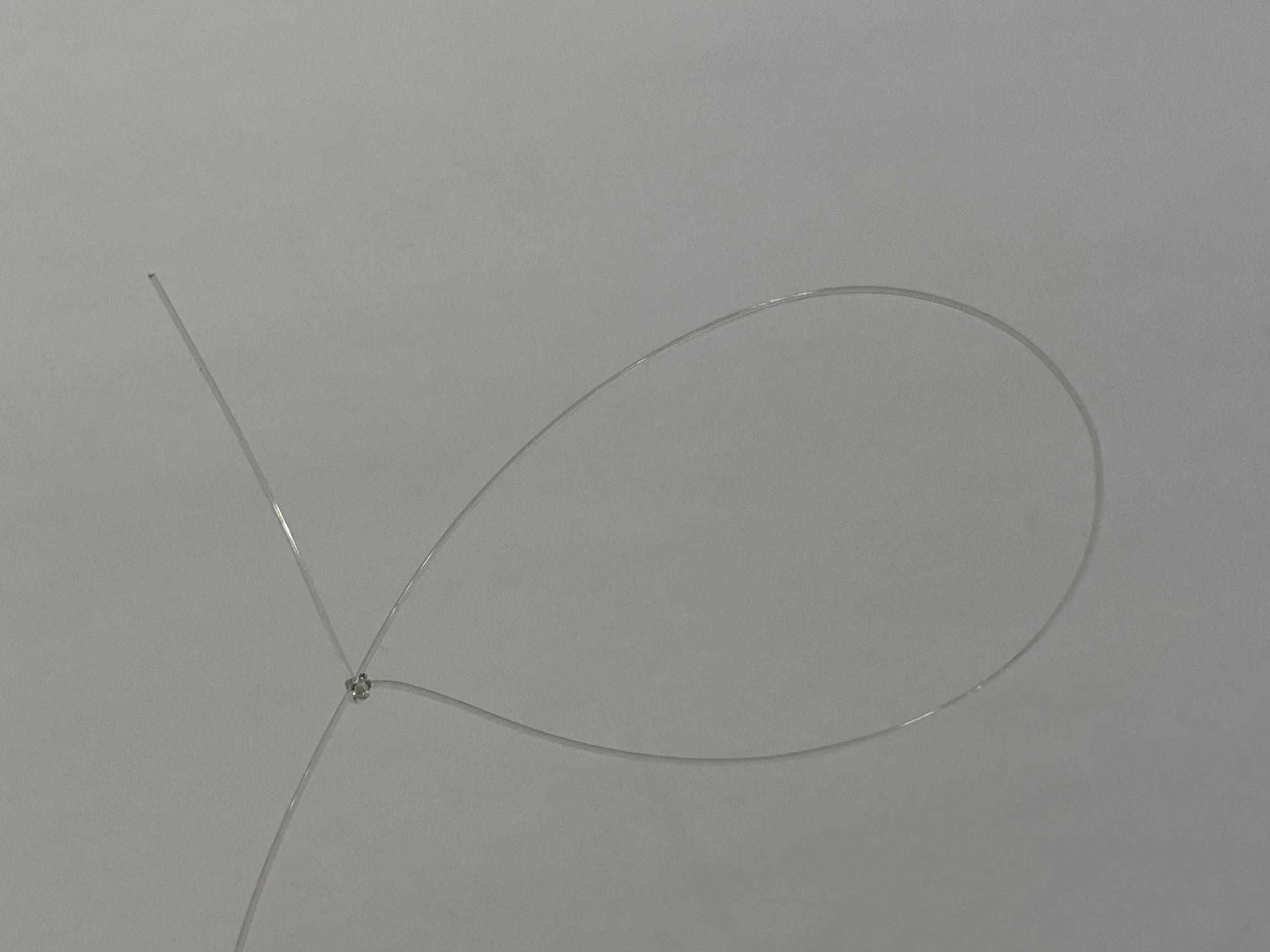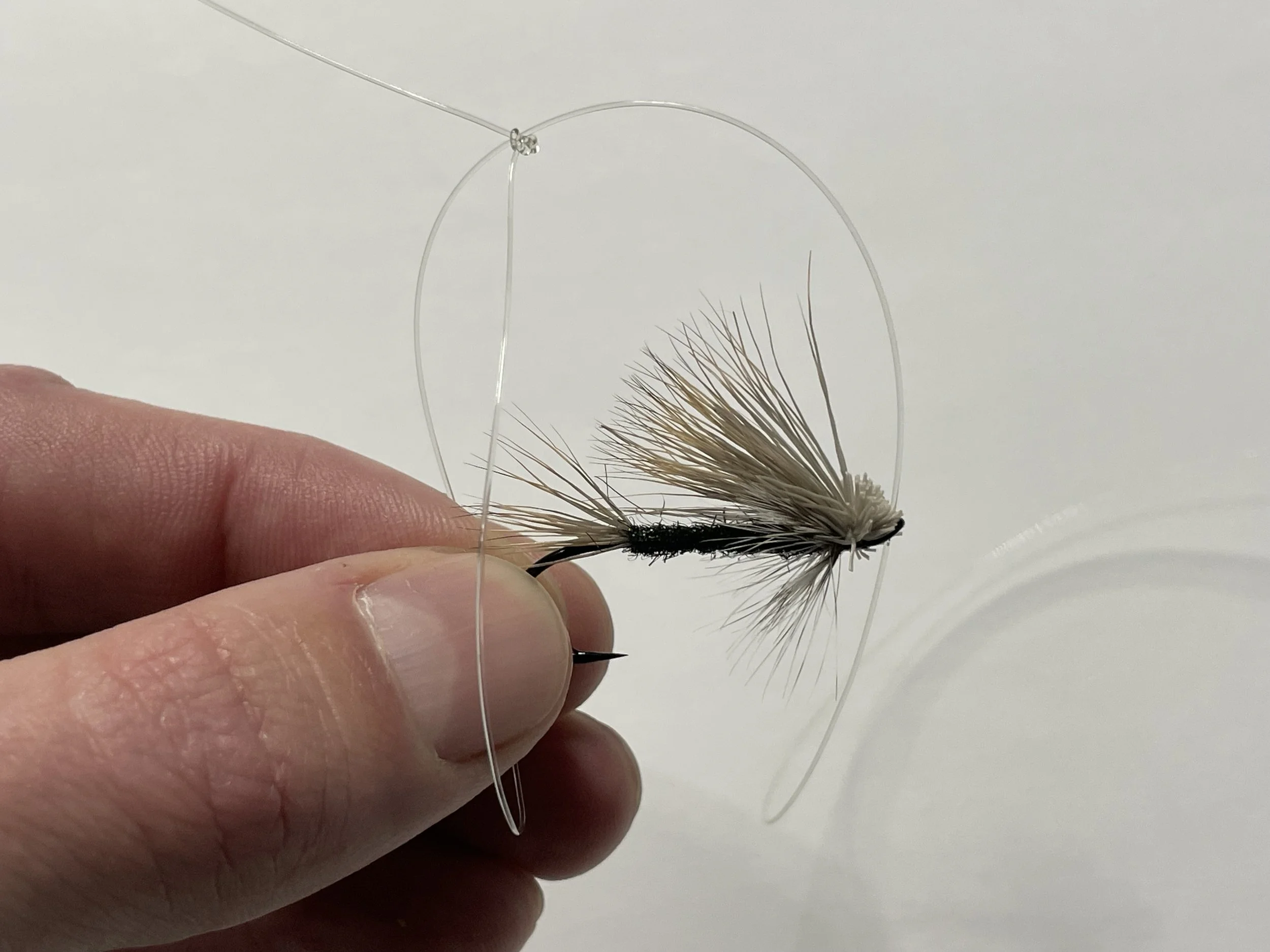Fly of the Month
February 2025
Grease Liner
Fluorocarbon
vs. Nylon Monofilament
It’s important to consider which leader material to use depending on the fly, presentation, or fishing situation you may encounter. Fluorocarbon and nylon have different characteristics making them both useful.
Fluorocarbon by composition is a denser material than nylon and nearly twice as dense as water. This makes fluorocarbon a good choice if a sinking line is preferred. Fluorocarbon is nearly invisible which may also be helpful. The downside to fluorocarbon is the poor shock resistance due to low stretch.
Fluorocarbon
Nylon Monofilament
Nylon monofilament is the classic fishing line found at every fishing store. Nylon provides good characteristics for a fishing line such as low density and some stretch. The low density of nylon makes it a good choice for a floating presentation. The stretch is favorable as it provides some shock resistance.
Loop Knots
Perfection Loop
The perfection loop is a strong loop knot used to add a loop to the end of a leader, line or backing
Start by passing the end of the leader behind itself, creating a loop.
Pass the tag end in front of the first loop, creating a second loop.
Pass the tag end between the two loops.
Pull the front loop through the back loop.
Moisten and pull tight.
Clip tag.
Saltwater Loop Knot
The saltwater loop knot is a very strong knot used to connect a fly to the leader. This allows the fly to move freely; adding enticing action to any fly.
Start with leader end.
Make a simple granny knot.
Adjust the size of loop.
Run the tag through the eye of the hook.
Pinch and hold the eye of the hook and loop.
Wrap the tag end around leader 3 times.
Stick the tag end through both loops, moisten and pull tight.
Voila!
Worm Weight Concept
With a simple worm weight, an angler is able to use an un-weighted fly and can adjust the weight as necessary.
Slide the worm weight onto the leader.
Tie a saltwater loop knot.
Slide the worm weight over the loop knot.
Twist Tie Hackle Tool
The twist tie hackle tool is a great tool for keeping hackles and materials held back away from the head of the fly so the fly tyer can neatly finish the head.
Form a pair of bull horns.
Slide over front hackles.
Trailing Loops
Use this technique to tie in perfect length trailing loops on your intruder flies.
Create a loop with the wire and pass it through the eye and just over the bend of the hook.
Place the hook and wire as shown and secure the wire evenly on both sides of the shank.
Finish securing the wire to the shank by wrapping to the eye return and doubling it back to the starting point.
Now you can easily change the hook.
Barometric Pressure
Barometric pressure is a measurement of the weight of the air in our atmosphere.
I believe it’s fair to say we’ve all watched the weatherman regularly talk about low and high pressure systems. These pressure systems are measurements of barometric pressure and can indicate an upcoming weather pattern. Watching the weatherman and deciphering these systems can increase your odds of success while out on the river.
Why?
Barometric pressure is a measurement of the weight of the air in our atmosphere. During a low pressure system, the weight of the air is decreasing and during a high pressure system the weight of the air is increasing. The weight of the air has a major effect in regards to fishing. A low pressure system means there is less weight or pressure pushing down on the water’s surface. This causes fish to be more active as it is easier for them to move. Conversely, a high pressure system can indicate warmer air and more pressure making it harder for fish to move.
I was fortunate to have experienced this pressure change earlier this summer as a low pressure system moved in. Forecasters predicted the system and the next morning the river exploded with activity. A significant change from the day before, birds and insects were swarming with great excitement. It was completely noticeable that something had changed and the fishing proved it.
Next time you hear the weatherman talk about low pressure, be sure to pay attention because your odds of success may be increasing.
Twisted Hitch
The twisted hitch is a great way to attach a zonker strip to a trailing hook and keeps the hook in motion with the rest of the fly.
Start with hook and loop seperate.
Slide the loop over the bend of the hook.
Stick the zonker through the loop.
Slide the loop through the eye of the hook.
Put another twist in the loop opposite as the direction you twisted before.
Pull the loop and zonker tight. Use a bodkin to free the trapped fur in the loop.
Twist the loop either to the right or left one turn.
Slide the loop back over the bend of the hook.
Now you have connected the hook and zonker and can easily change the hook.
Turle Knot
The Turle Knot is a straight inline knot used to attach a fly to the leader. The Turle Knot is a popular knot that has been used throughout history because of the straight pull from the hook shank to the leader. A riffling hitch can also be used with the Turle Knot to add action to a skating fly.
Run the end of the leader up through the up-eye.
Make a loop with the tag end going behind the line.
Fold the tag end over the loop.
Wrap the tag around the right arm of the loop 3 times.
Stick the tag end back through the loop being pinched by your thumb and index finger.
Pull the tag and moisten the knot, creating a slip loop knot.
Place the loop over the rear of the fly and position the loop over the eye of the hook.
Pull the loop tight.
Shrimp Eyes
Make your own shrimp eyes using monofilament and nail polish.
Start by cutting pieces of 40lb. monofilament about 2-3 inches long.
Using a lighter, melt the end until it forms a small ball.
Paint the ends with nail polish and finish with clear coat.
Fly of the Month
January 2025
Scott Howell’s Signature Intruder
Fly of the Month
December 2024
Lunch Spider






